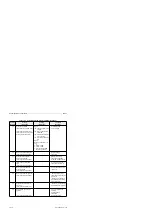
S5-95F
Differences Between the S5-95U and the S5-95F
16
Differences Between the S5-95U and the S5-95F
The S5-95F's special failsafe method of operation makes a number of differences between it and
the S5-95U inevitable. These differences are discussed in detail below.
16.1
Differences in the I/Os
Both the S5-95F's onboard and external I/Os differ from those of the S5-95U. Also note the
differences in wiring.
16.1.1 Onboard I/Os
•
Both DI bytes are failsafe (with integral test function)
•
1 DQ byte is failsafe for every four source outputs and every four sink outputs
•
4-bit DQs for short-circuit test or other non-failsafe DQs; these DQs can be addressed by both
subunits; a total of 8 bits is therefore provided
•
Both counters are failsafe (with integral test function) and each has a maximum frequency of
350 Hz
•
4-bit interrupt inputs are failsafe
•
No analog I/Os
16.1.2 External I/Os
•
Same quantity framework possible as on the 95U; when failsafe modules are used, the quantity
framework is reduced accordingly; therefore, a maximum of 16 modules, in addition to onboard
I/Os, is possible per S5-95F
•
Special F modules with integral test functions
•
Modules from the 100U series can be used only where failsafety is not a requirement
16.1.3 Wiring
•
Either source or sink output for failsafe DQs
Reason: Driving of outputs is bipolar (second independent disable path)
•
For failsafe DIs either
1 sensor, branched to both inputs or
2 sensors, one for each subunit
EWA 4NEB 812 6210-02
16-1
















































